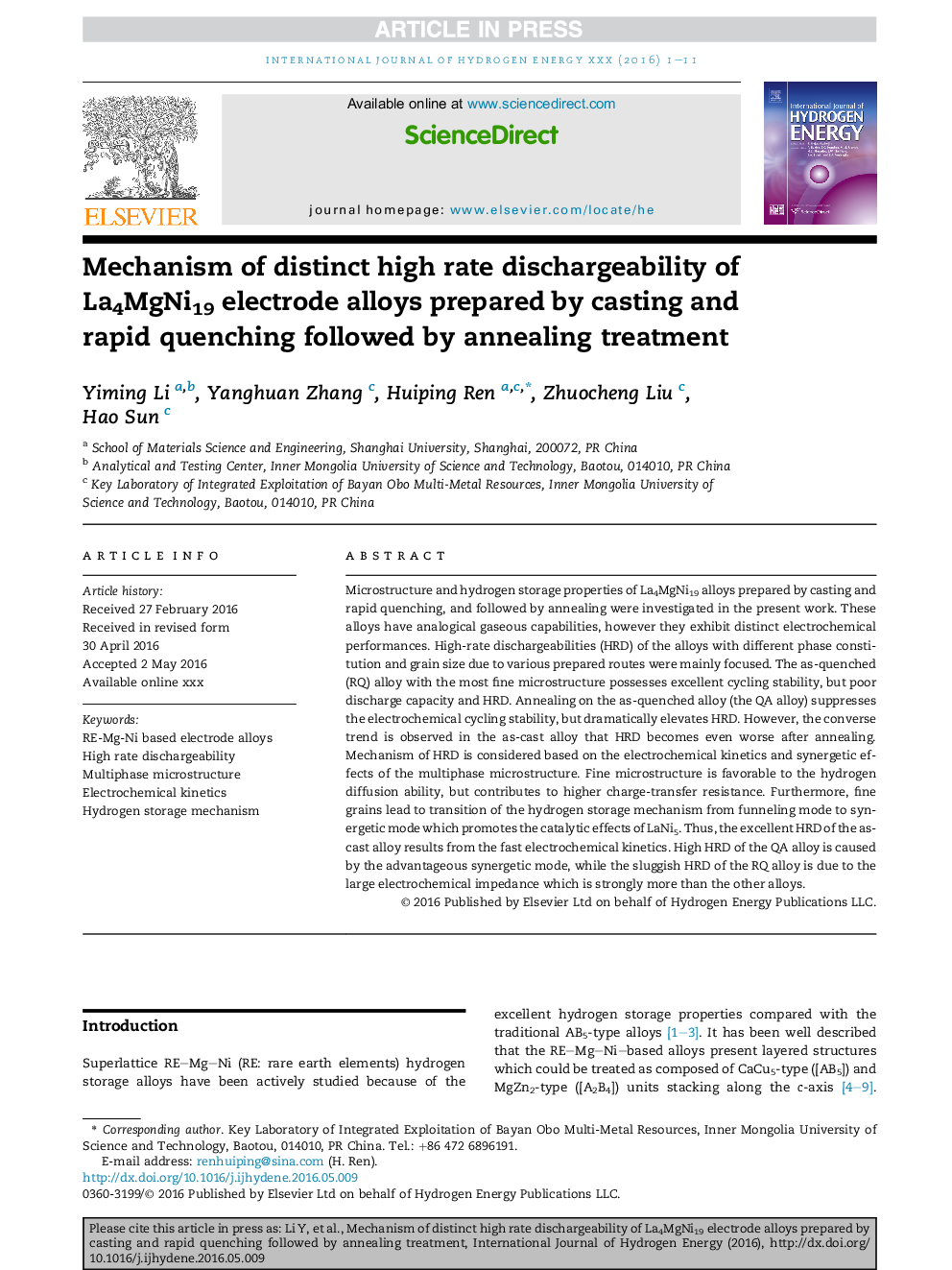| Article ID | Journal | Published Year | Pages | File Type |
|---|---|---|---|---|
| 5147406 | International Journal of Hydrogen Energy | 2016 | 11 Pages |
Abstract
Microstructure and hydrogen storage properties of La4MgNi19 alloys prepared by casting and rapid quenching, and followed by annealing were investigated in the present work. These alloys have analogical gaseous capabilities, however they exhibit distinct electrochemical performances. High-rate dischargeabilities (HRD) of the alloys with different phase constitution and grain size due to various prepared routes were mainly focused. The as-quenched (RQ) alloy with the most fine microstructure possesses excellent cycling stability, but poor discharge capacity and HRD. Annealing on the as-quenched alloy (the QA alloy) suppresses the electrochemical cycling stability, but dramatically elevates HRD. However, the converse trend is observed in the as-cast alloy that HRD becomes even worse after annealing. Mechanism of HRD is considered based on the electrochemical kinetics and synergetic effects of the multiphase microstructure. Fine microstructure is favorable to the hydrogen diffusion ability, but contributes to higher charge-transfer resistance. Furthermore, fine grains lead to transition of the hydrogen storage mechanism from funneling mode to synergetic mode which promotes the catalytic effects of LaNi5. Thus, the excellent HRD of the as-cast alloy results from the fast electrochemical kinetics. High HRD of the QA alloy is caused by the advantageous synergetic mode, while the sluggish HRD of the RQ alloy is due to the large electrochemical impedance which is strongly more than the other alloys.
Keywords
Related Topics
Physical Sciences and Engineering
Chemistry
Electrochemistry
Authors
Yiming Li, Yanghuan Zhang, Huiping Ren, Zhuocheng Liu, Hao Sun,
